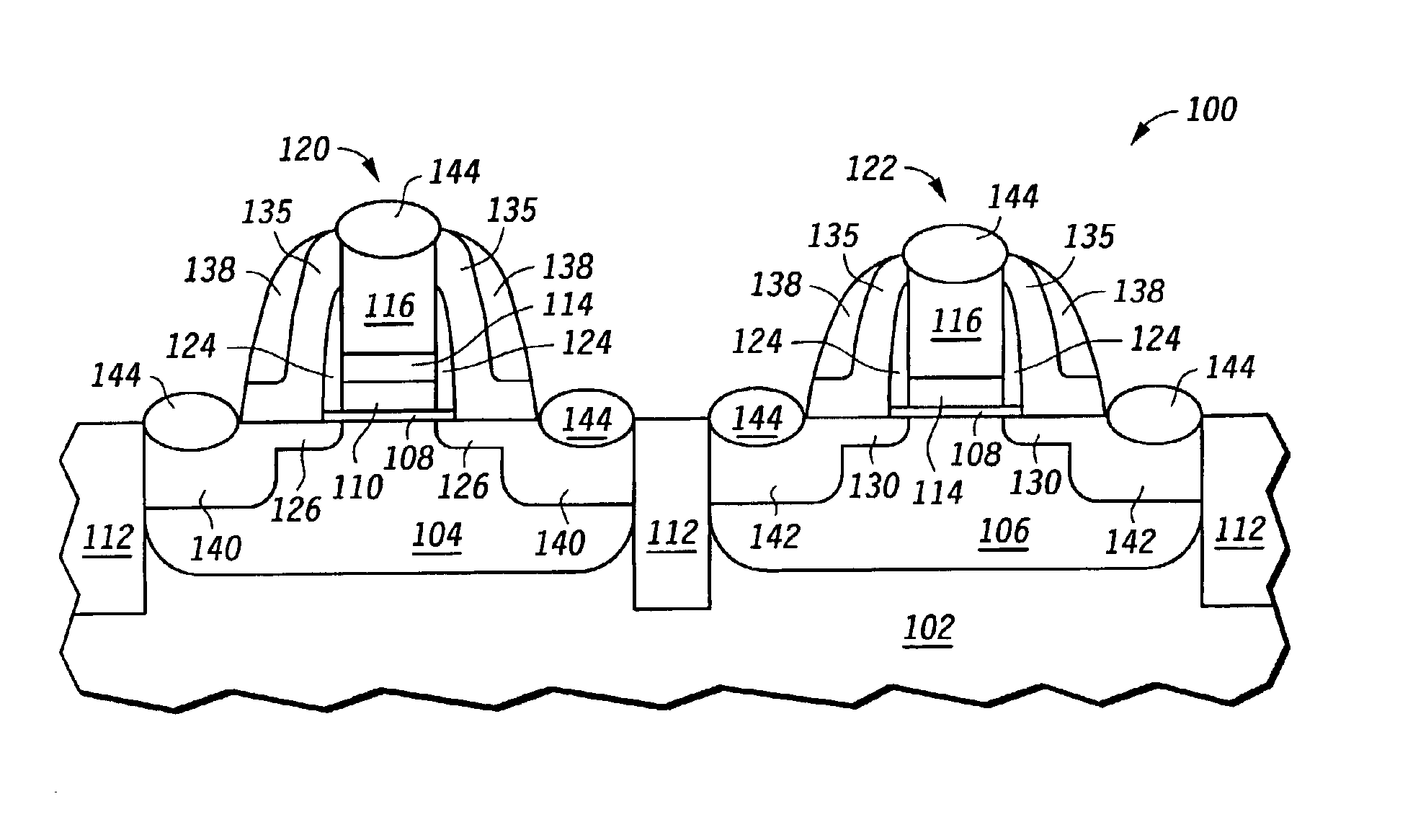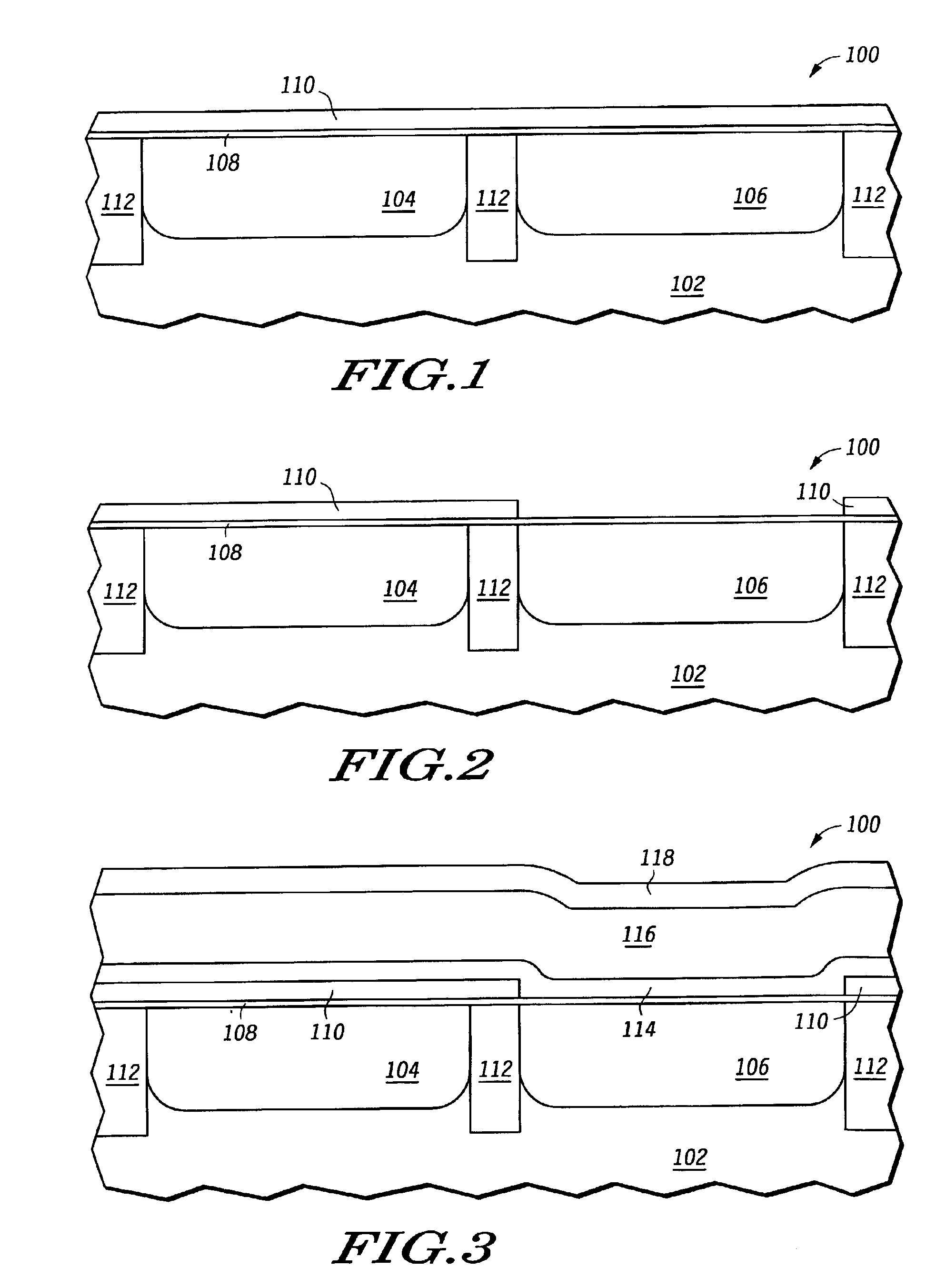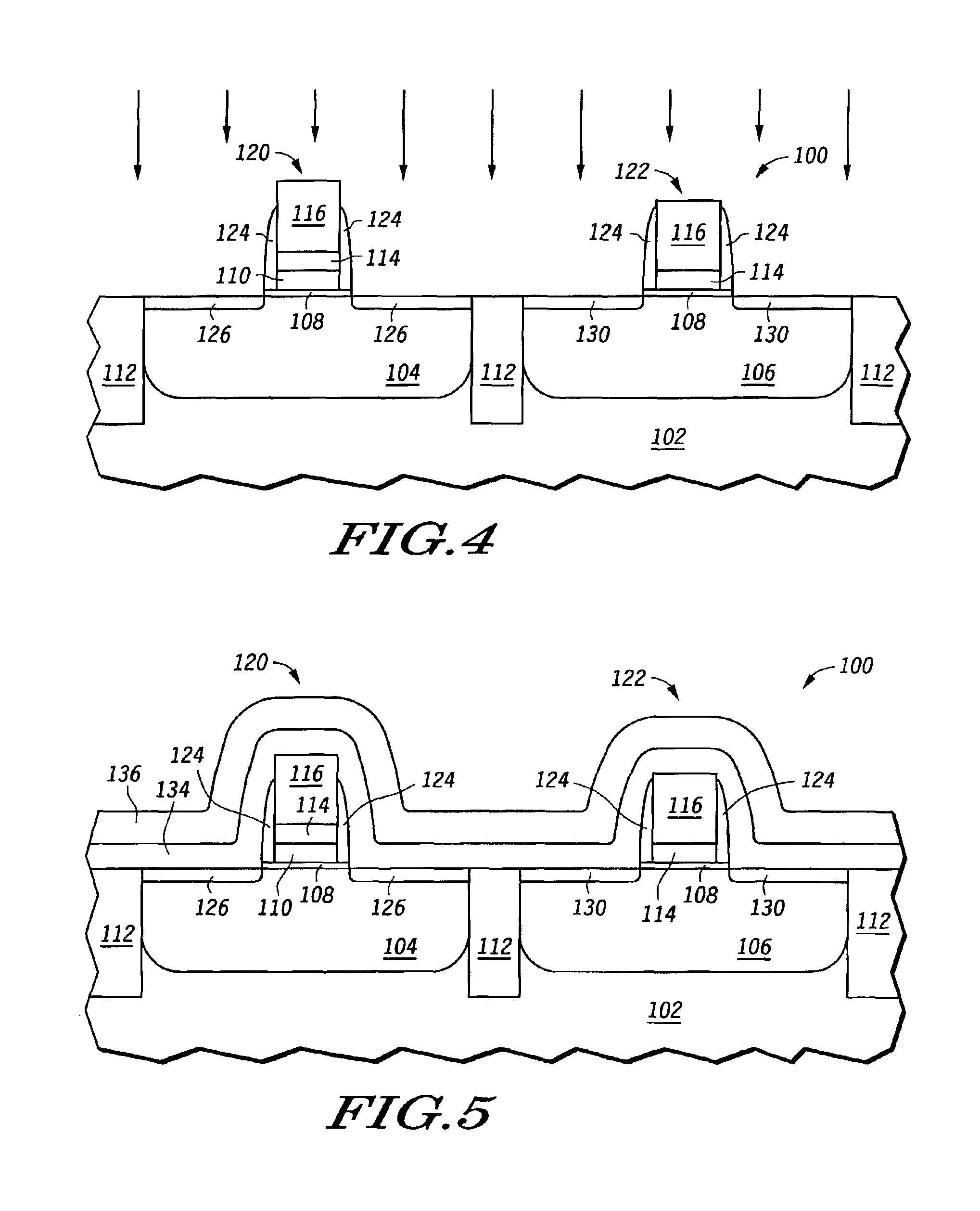Capped dual metal gate transistors for CMOS process and method for making the same
a metal gate transistor and cmos technology, applied in the field of semiconductor fabrication, can solve the problems of increasing the difficulty of incorporating polysilicon gates into advanced technologies, increasing the difficulty of polysilicon gate use, and increasing the difficulty of reducing the thickness of dielectrics
- Summary
- Abstract
- Description
- Claims
- Application Information
AI Technical Summary
Problems solved by technology
Method used
Image
Examples
Embodiment Construction
[0016]Generally, the present invention overcomes the previously described problem of etchant attacks on dual metal gate structures through a combination of spacers and a polysilicon capping layer. Thin, “zero spacers”, preferably of silicon nitride, are formed immediately adjacent the patterned gate structures in each of the PMOS and NMOS portions of the device. The extension implants, and halo implants if used, are then performed. The zero spacers protect the sides of the gate structure during removal of the photoresist mask used to mask the implants. A polysilicon capping layer is used to protect the top of the gate structures. Polysilicon is not attacked by conventional pirhana or SC-1 cleans.
[0017]The polysilicon capping layer was also found to be beneficial in protecting the sides of the gate structure. A problem discovered by Applicants in using zero layer spacers alone, or zero layer spacers in conjunction with an overlying ARC (anti-reflective coating) on the gates, is that ...
PUM
 Login to View More
Login to View More Abstract
Description
Claims
Application Information
 Login to View More
Login to View More - R&D
- Intellectual Property
- Life Sciences
- Materials
- Tech Scout
- Unparalleled Data Quality
- Higher Quality Content
- 60% Fewer Hallucinations
Browse by: Latest US Patents, China's latest patents, Technical Efficacy Thesaurus, Application Domain, Technology Topic, Popular Technical Reports.
© 2025 PatSnap. All rights reserved.Legal|Privacy policy|Modern Slavery Act Transparency Statement|Sitemap|About US| Contact US: help@patsnap.com



